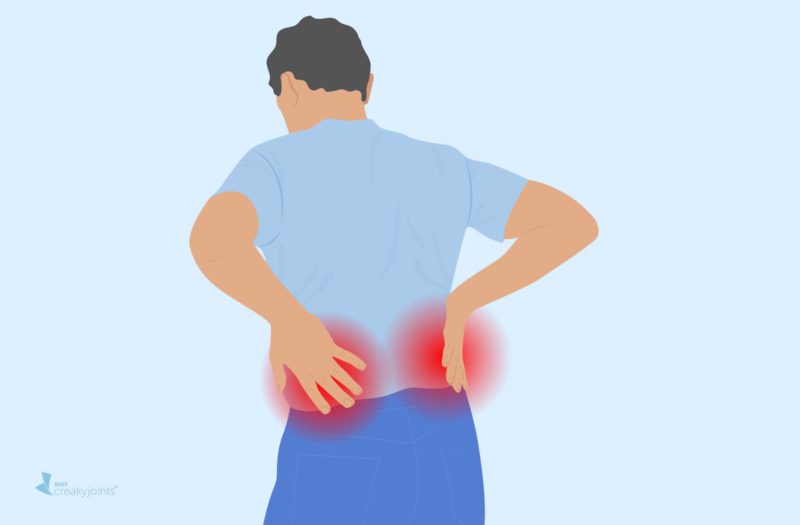Although osteoporosis is more common in women than in men, new research shows that the condition going underdiagnosed and undertreated in older men.
Osteoporosis is a disease that results from a loss of bone mass (measured as bone density), and from bone structure changes. Bone is constantly replaced by the body, but most people start to slowly lose more bone tissue than their body replaces by their mid-30s — causing bones to become weaker and thinner.
When women reach menopause, this process accelerates, which can lead to bone fractures. For men, bone loss becomes a greater issue around age 70.
In a new study presented at ACR Convergence 2020, the annual meeting of the American College of Rheumatology, researchers looked at the baseline characteristics of male Medicare patients who had experienced an osteoporosis-related fracture.
In particular, they collected the data of Medicare fee-for-service (FFS) beneficiaries aged 65 or older who had a closed-fragility, or osteoporosis-related, fracture between January 2010 and September 2014. Patients with either Paget’s disease (a bone disease that also causes fragility) or any cancer except for non-melanoma skin cancer at baseline were excluded from the research.
The study included a total of 9,876 Medicare beneficiaries, 61 percent of whom were age 75 or older. Ninety percent of the patients were white and fewer than 6 percent had a standard bone mineral density test with dual energy x-ray absorptiometry (DXA) in the two years before experiencing a fracture.
About two-thirds of the patients had a history of musculoskeletal pain and nearly half had a history of opioid use one year prior to their fracture.
The most common fracture sites were the spine, hip, and ankle.
The researchers divided the patients into four groups based on their diagnoses and/or treatment of osteoporosis at baseline. They found that of all patients with a qualifying fracture:
- About 92% did not have any claim for a bone density (DEXA) test or prescription claim for osteoporosis treatment in the two years before their fracture
- 8% had been tested but not treated for osteoporosis
- 3% were treated but not tested for osteoporosis
- Only 2.1% were both tested and treated for osteoporosis
A decline in DEXA scans from 2012 to 2014 was especially high among men ages 75 and older, who have a higher risk of fracture.
The results of the study show that it’s important to better identify high-risk male patients, who may benefit from targeted osteoporosis screening and therapies earlier on.
“There is a need for consistent osteoporosis screening recommendation in men,” said the study’s co-author, Jeffrey Curtis, MD, a Professor of Medicine in the Division of Clinical Immunology and Rheumatology at the University of Alabama at Birmingham, in a press release. “Incorporation of these recommendations in quality-of-care measures for osteoporosis management and post-fracture care are warranted to improve health outcomes in this population.”
Dr. Curtis is also a principal investigator for ArthritisPower, our patient-centered research registry. You can use our ArthritisPower app to track your symptoms and disease activity and share your results with your doctor.
Osteoporosis can be a significant burden on patients and lead to physical symptoms, increased cost of health care, and even death. While only one quarter of patients with osteoporosis-related fractures are men, emerging evidence shows that men with osteoporotic fractures may fare worse than women.
The World Health Organization, American Association of Clinical Endocrinologists, United States Preventive Services Task Force, National Osteoporosis Foundation (NOF), and the American Academy of Family Physicians recommend screening women over 65 years of age for osteoporosis. However, there aren’t consistent guidelines for osteoporosis screening in men, said Dr. Curtis.
In fact, these groups don’t make any recommendations at all — except for the NOF, which recommends that all men over age 70 be screened, as well as men between the ages of 50 and 69 who have osteoporosis risk factors.
“Men are typically not part of routinely recommended screening with DEXA and so they are both underdiagnosed and undertreated,” said Dr. Curtis. “While many comorbidities (i.e., cardiovascular disease) are commonly recognized and treated in men, sometimes even more than in women, osteoporosis is not one of them. Even post-fracture for major fractures like a hip, rates of treatment are disappointingly low, leaving men at risk for yet another fracture.”
Dr. Curtis notes that future research should focus on better characterization of high-risk patients and existing comorbidities that may have shared risk factors. This could enable earlier identification and treatment of osteoporosis.
Be Part of Research with ArthritisPower
Join CreakyJoints’ patient-centered research registry and participate in voluntary studies about managing arthritis and musculoskeletal conditions such as osteoporosis. Learn more and sign up here.






